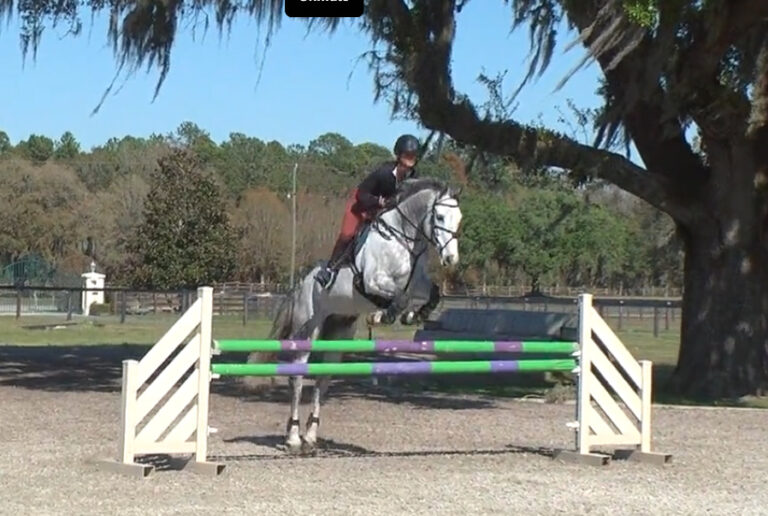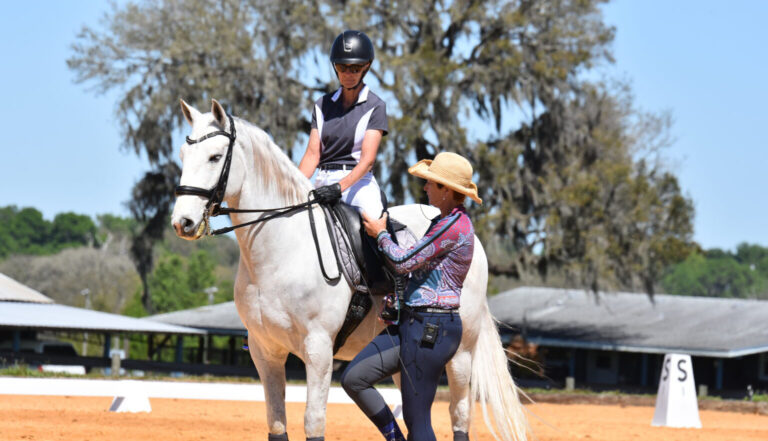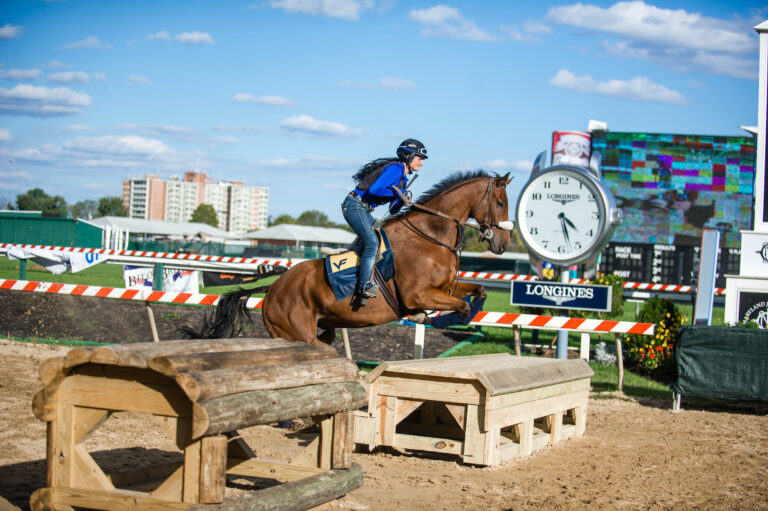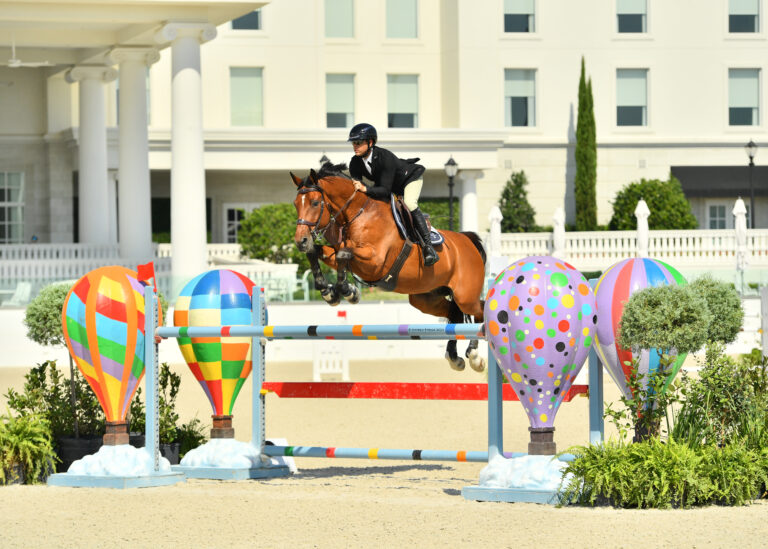Anytime I mention “self-carriage” to horsemen, their eyes light up and they smile. It is obvious to me they are remembering an instant when they and their horses were in perfect harmony and perfect balance. Many times they will go on to tell me when they first felt self-carriage and what it meant to their riding.

Because self-carriage should be a goal of any serious horseman, it is important to define what we mean by the term. As I find no definitions of it in the rule books or dictionaries, I will define self-carriage as the horse’s ability to maintain his balance with the weight of the rider on his back. When our horses are in self-carriage, we feel that the next step, or stride or jump will be the same as the last, without any additional input from us.
There are classical and philosophical reasons to work toward self-carriage with our horses, but there are pragmatic reasons as well. Riders of show jumpers and show hunters want their horses to jump to the best of their abilities, and eventers literally trust their horses with their lives over fixed obstacles. Obviously, we all have a stake in the achievement of self-carriage that is real and immediate, as well as long-term and theoretical.
Further Defining Self-Carriage
I have been thinking about self-carriage for a while. It is one of those concepts where we all think we know what it is, but we have a hard time describing it. Whenever I have problems thinking through a riding concept, I turn to the books that are meaningful to me. Different authors use different words and descriptions, but they all have felt the same thing and want us to work toward it in our riding.
In The Forward Impulse, Piero Santini says that once we put the trained horse at a certain pace and speed, he should remain at that pace and speed until we tell him to change. In Academic Equitation, Gen. de Carpentry says simply that the trained horse does not require the rider’s leg. (He probably has a more sophisticated idea of the trained horse than you and I do, but I understand what he is telling me.) Jean Froissard says in The Education of Horse and Rider that the job of the rider is to tell the horse what to do, and then allow him to do it. In Horse Gaits, Balance and Movement, Susan Harris makes the point that a horse in self-carriage can perform his tasks on a soft or loose rein without losing balance.
The Rider’s Role
All of these statements make sense to me, and I hope they do to you as well. However, before we get too involved with the self-carriage of the horse, I should make the point that if you do not have a correct position, your horse will never truly achieve self-carriage. Gripping with your heels or hanging on the reins like a drunk on a lamppost will produce predictable, but not desirable, results. The desirable process of training your horse to carry himself and you in balance will be greatly delayed if you cannot first control yourself in the saddle.
It is sad that mankind destroys things that he touches in the natural world, including the natural movement of the horse. For example, most of us have seen a young horse with outstanding natural paces. His walk is effortless, gliding and powerful. His trot is cadenced and already starting to show a period of suspension. His canter is poised, light and naturally elevated. Yet what happens when the rider is placed on that horse’s back for the first time? You already know the answer. The unaccustomed weight of even a good rider on his back causes the horse to lose his balance, and his paces become flawed and irregular. It will take years of careful, patient training before that horse will be able to display his natural paces under saddle.
The same process occurs when teaching a horse to jump. We watch a young horse jumping in a roundpen or on a longe line, and we notice that he instinctively gathers himself at the base of the obstacle, he naturally uses his head and neck, and he usually takes a good shape in the air. Yet the moment we place a rider’s weight on his back, what happens? The same thing that just happened to your lovely dressage prospect: The weight destroys his balance and self-carriage.
The bad news is that our weight destroys the untrained horse’s self-carriage; however, the good news is that through long-term, systematic training, we can reestablish and improve his self-carriage until we can once again see that horse as nature intended for him to be stepping, in Shakespeare’s lovely phrase, “so proudly as if he disdain’d the ground.”
Not Just About Dressage
Self-carriage is one of those concepts that appear simple from a distance, yet become more complicated the more closely you examine it. For example, while I have been discussing self-carriage, odds are that most of you have been visualizing an upper-level dressage horse, trained and conditioned to perform with his forehand elevated and his weight shifted to his hindquarters.
However, self-carriage is not just a condition of the well-trained dressage horse; it is an attribute of a well-trained horse in any sport. The reason: Self-carriage is about balance more than it is about the transfer of weight to the hindquarters. If you do not believe me, go and watch an upper-level hunter show. Those horses consistently carry more weight in their forehand than on their hindquarters, yet they are terrific examples of self-carriage.
At local events I attend, I hear a great deal from trainers about how the horse has to be “back on his hocks” and that he must “coil his body like a spring to jump well.” The show hunters disprove this theory on a daily basis; they produce wonderful, flowing rounds over fences that measure up to 4 feet in the Regular Working Hunter divisions. They do this on loose reins, and they produce bascules in the air that approach perfection.
If you think show hunters are “on their forehand,” wait until you meet a cutting horse. I would imagine that at times a good cutting horse will have 80 percent of his weight on his forehand, yet he is poised and balanced in his work. I confess that I have never ridden one of these equine athletes, because I am convinced I would be left facing north on a southbound cutting horse. (Falling off is so embarrassing, don’t you think?) My point here is that hunters and cutting horses demonstrate that the horse’s ability to carry himself and the rider while performing athletic feats does not depend on an elevated forehand.
Learn to “Put Your Hands Down”
The fun thing about horses is that horse sports other than our own have so much to teach us. I often talk about cutting horses with Don Burt. He is a good friend and a good horseman and I always learn something from him. Don mentioned that Hall of Fame cutting-horse trainer Bobby Ingersoll recently told him, “Don, I just spoiled one of the best young horses I’ve ever had. I put my hands down one day too late.” What Bobby Ingersoll meant is that he had taught a young horse to wait to be guided to the cow, rather than teaching the cow horse to do it for himself.
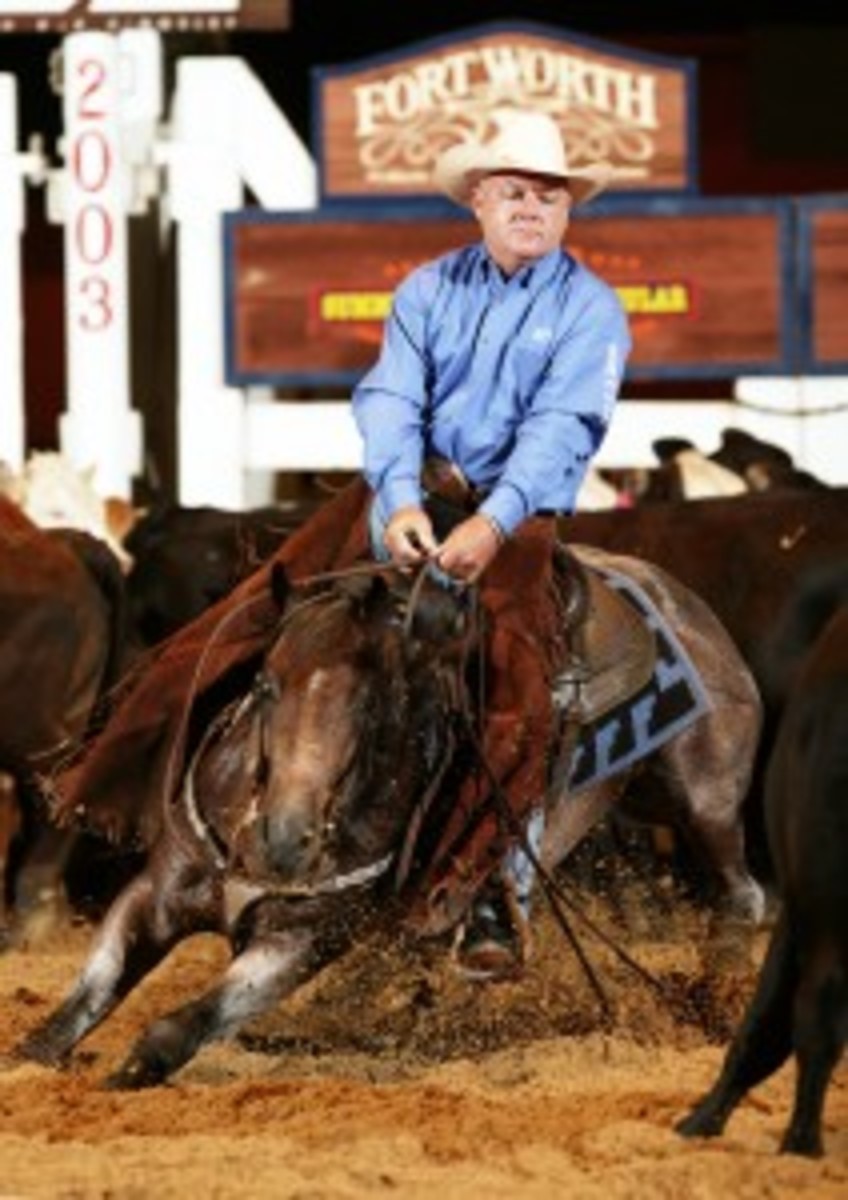
When I heard this, I immediately thought it was a telling metaphor for the process we must go through when teaching horses to jump cross-country obstacles. I am firmly convinced that the rotational falls implicated in some recent rider- and horse fatalities are caused not by speed or a bad takeoff spot, but by an instant’s indecision in the horse’s mind: He waits to be told whether to leave long or short, and the rider does not make the decision in time. We need to “put our hands down,” as cutting horse trainers would have it, and make sure our horses are thinking about their job, not thinking about their riders.
The horse’s ability to perform on soft or loose reins is a hallmark of self-carriage. Most dressage riders are taught to soften their inside reins on circles or during shoulder-in as a check of self-carriage. If you try this and your horse speeds up or abruptly changes direction, then you just failed the test. He is still relying on you to balance him, and you need to continue calm, patient work until he begins to develop his ability to carry himself with your weight on his back.
Having said all this, I think that we must be aware of the philosophical benefits of self-carriage as well. It is a complicated, uneasy world that we live in these days, and any small interval of mental and physical balance is a treasure. I think those moments of self-carriage when we ride speak to something deeper than just some technical state of equilibrium.
At its best, our riding centers us above our horses. When we are centered above our horses, we are centered above the earth, and for that moment–however brief–we are centered in the natural world, we are harmonious with it and we are at peace.
This article originally appeared in the October 2009 issue of Practical Horseman.





